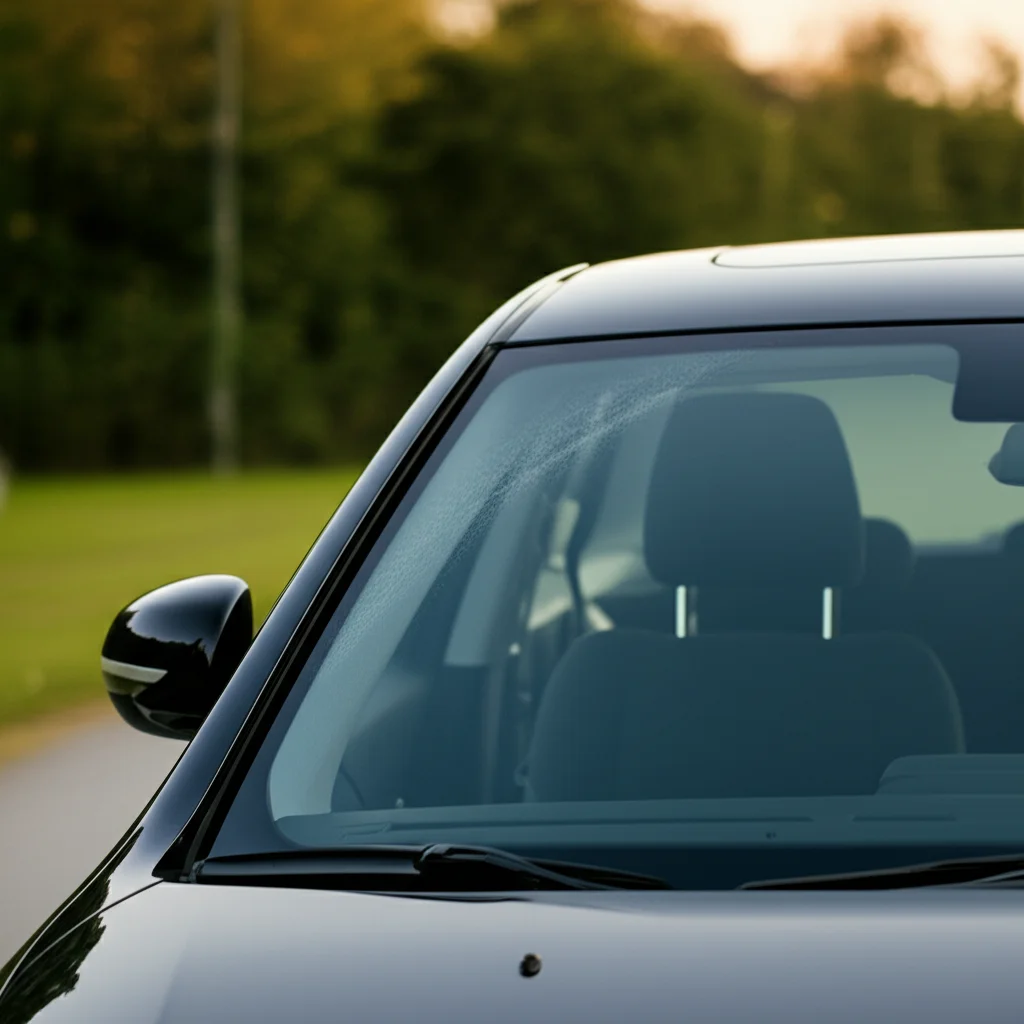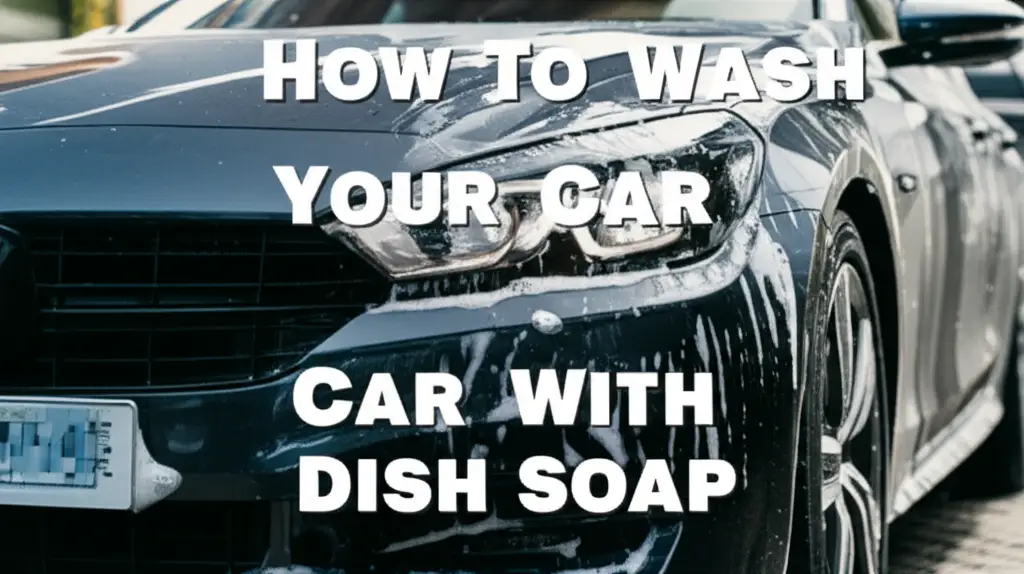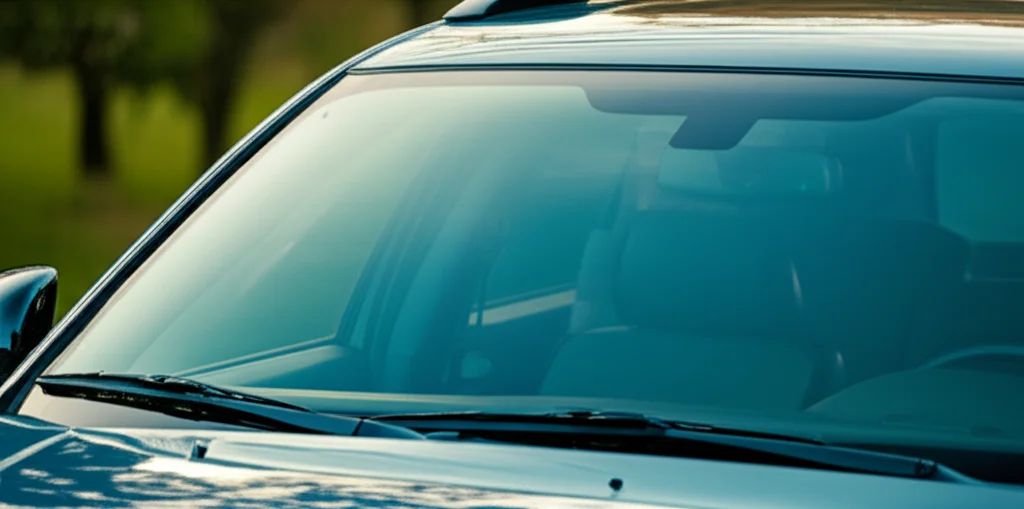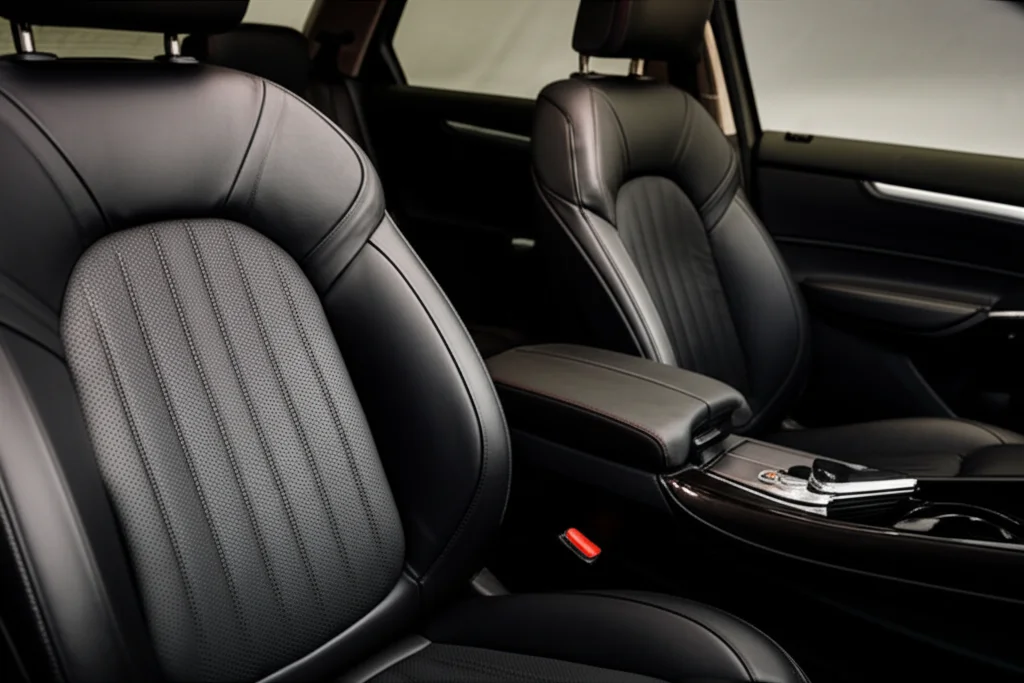· Todd Martin · Car Care · 20 min read
How To Clean Car Windshield

Achieve Clear Vision: How To Clean Car Windshield Effectively
Driving with a dirty windshield is more than just annoying. It reduces visibility. This creates a safety risk for you and for others on the road. A clear windshield makes driving easier. It also makes your car look better.
Many people think cleaning a windshield is a quick job. They often find streaks or haze remain after cleaning. This article will show you how to clean car windshields correctly. We cover methods for both the outside and inside. We will discuss common issues like water spots, bug splatters, and interior film. You will learn the best tools and products to use. Follow our steps to get a perfectly clear view every time you drive. Your car will thank you, and your safety will improve.
Takeaway
- Use specific tools like microfiber towels and proper glass cleaner.
- Clean both the outside and inside of the windshield.
- Address stubborn issues like bug guts, water spots, and interior haze separately.
- Maintain your windshield regularly to ensure lasting clarity and safety.
To clean your car windshield effectively, use clean microfiber towels and a quality glass cleaner, or a DIY solution of water and vinegar. Work in small sections, wiping horizontally on the outside and vertically on the inside to spot streaks. Finish with a dry, clean microfiber towel for a clear, streak-free view.
Why a Clean Windshield Matters for Your Drive
A clean car windshield is not just about making your vehicle look good. It is a critical part of driving safety. When your windshield is dirty, it can cause glare. This glare makes it hard to see other cars, pedestrians, or road hazards. Dirt, dust, and grime scatter light. This effect reduces your ability to see clearly, especially at night or when the sun is low.
Imagine driving into the sun with a dirty windshield. The smudges and streaks turn into blinding spots. This can lead to accidents. A clean windshield gives you an unobstructed view. You can react faster to changing road conditions. This helps you avoid unexpected obstacles. It keeps you and your passengers safe.
Beyond safety, a clean windshield simply makes driving more pleasant. You feel more confident. The world looks sharper and brighter through clear glass. A well-maintained windshield also protects the glass itself. Regular cleaning removes abrasive particles that can scratch the surface over time. This preserves the integrity of your car’s most important window. Ignoring windshield cleanliness is ignoring a key safety feature.
Keeping your windshield spotless helps you see the road clearly. This directly impacts your reaction time. It helps prevent accidents. A clean windshield is a sign of a driver who cares about safety. It shows you care about your vehicle. I always feel more prepared when my windshield is perfectly clear. It makes every drive safer and more enjoyable.
Essential Tools and Supplies for Windshield Cleaning
Before you start to clean your car windshield, gather all your supplies. Having everything ready makes the job quicker. It ensures a better result. The right tools prevent streaks and damage. Using improper items can leave marks or even scratch the glass.
Here is what you need:
- Two Buckets: One for soapy water, one for rinsing. This keeps your cleaning solution clean.
- Car Wash Soap: Use a soap made for cars. Household detergents can strip wax or leave residue.
- Microfiber Wash Mitt or Sponge: These are gentle on paint and glass. They lift dirt effectively.
- Multiple Microfiber Towels: You need at least four. Use two for washing/drying the outside glass. Use two for the inside. Microfiber is key for a streak-free finish.
- Automotive Glass Cleaner: Choose a cleaner made for car windows. Ammonia-free formulas are best, especially if you have tinted windows. Ammonia can damage tint.
- Rubbing Alcohol (Optional): This helps remove stubborn film or grease on the inside.
- Clay Bar Kit (Optional): For deep cleaning or removing embedded contaminants.
- Bug and Tar Remover (Optional): Necessary for baked-on bug splatters.
- Water Repellent Treatment (Optional): After cleaning, this can help water bead off.
Having these items ready before you begin saves time. It prevents you from stopping mid-task. Using good quality products makes a big difference. Cheap towels can leave lint or streaks. Poor cleaners can leave residues. Invest in good tools for the best outcome. I always make sure I have fresh microfiber towels for every windshield cleaning session. You might also find it helpful to keep your overall car cleaning supplies organized. For more tips on keeping your car clean, check out this guide on how to keep your car clean.
Step-by-Step Guide to Cleaning the Outside Windshield
Cleaning the outside of your car windshield is often the first step. This side collects road grime, bug splatters, and tree sap. These contaminants need special attention. A thorough cleaning here improves visibility significantly. It also makes your car look much better from the outside.
Begin by rinsing the entire windshield with water. Use a hose to spray off loose dirt and dust. This prevents scratching the glass when you start scrubbing. Make sure to get all corners and edges.
Next, wash the windshield with car wash soap. Mix car wash soap in a bucket of water. Use a microfiber wash mitt or sponge. Gently scrub the entire windshield surface. Pay attention to areas with bug guts or bird droppings. These can be tough to remove. If needed, let the soap sit for a minute to loosen tough spots.
After washing, rinse the windshield thoroughly with clean water. Make sure no soap residue remains. Soap residue will cause streaks when the windshield dries. Use your second bucket of clean water to rinse your wash mitt often.
Now, it is time for glass cleaner. Spray your chosen automotive glass cleaner directly onto the wet windshield. Work in sections if your windshield is large. Use a clean, dry microfiber towel. Wipe the cleaner in overlapping motions. Wipe horizontally. This pattern helps prevent missing spots. Flip your towel often to a clean, dry side.
Finally, buff the windshield dry with a second clean, dry microfiber towel. Buff in small circles until the glass is perfectly clear. Check for any remaining streaks from different angles. Sometimes streaks only appear from a specific view. If you still see streaks, repeat the glass cleaner step. For especially stubborn residue like old water spots or sap, a specialized windshield cleaner with vinegar can be very effective.
Remember to also clean your wiper blades. Wipe them with your glass cleaner and a towel. Dirty blades can immediately re-smear a clean windshield. I always start with the outside. It sets the stage for a truly clear view.
Tackling Stubborn Exterior Windshield Stains
Sometimes, standard washing and glass cleaner are not enough. Your car windshield might have stubborn stains. These include baked-on bug splatters, tree sap, and hard water spots. These require specific techniques. Dealing with them properly ensures a truly clear surface.
Bug Splatters: Bugs can be acidic. They etch into the glass if left too long.
- Soak First: Place a wet towel over the bug splatters for 5-10 minutes. This softens them.
- Bug Remover: Spray a dedicated bug and tar remover. Let it sit for a few minutes as directed.
- Gentle Scrub: Use a bug sponge or a microfiber towel to gently scrub the area. Do not use abrasive pads.
- Rinse: Rinse thoroughly and follow with your regular glass cleaning process.
Tree Sap: Sap is sticky and hardens quickly.
- Rubbing Alcohol or Hand Sanitizer: Apply a small amount to a microfiber towel.
- Dab and Wipe: Dab the sap spot. Let it soften. Gently wipe away. Repeat if needed.
- Clay Bar: For very stubborn sap, a clay bar can safely remove it without scratching the glass.
- Wash Area: Wash the area with soap and water after sap removal.
Hard Water Spots: These are mineral deposits left behind when water dries.
- Vinegar Solution: Mix equal parts white vinegar and distilled water.
- Apply and Dwell: Spray the solution onto the spots. Let it sit for 5-10 minutes.
- Scrub Gently: Use a clean microfiber towel to scrub the spots.
- Rinse and Clean: Rinse with water. Then clean with glass cleaner.
- Acidic Cleaners (Use with caution): Some specialized water spot removers use mild acids. Follow instructions carefully.
- For persistent haze or spots, particularly if they affect visibility, consider techniques outlined in our guide on how to clean windshield haze.
When using specialized products, always test them on a small, inconspicuous area first. This ensures they do not damage your car’s paint or trim. Proper removal of these stains makes a huge difference in clarity. I’ve found that patience and the right product are key for these tough spots.
Inside Your Car: How to Clean Inside Windshield for Optimal Clarity
Cleaning the inside of your car windshield is often overlooked. However, the interior can collect a surprising amount of grime. This includes dust, smoke residue, and a hazy film from plastic off-gassing. This film creates glare and reduces clarity. It is crucial for a complete clean.
Before you start, wipe down your dashboard. This prevents dust from immediately settling back onto your clean windshield. Use a separate set of clean microfiber towels for the inside. This avoids transferring dirt from the outside.
Begin by lightly dampening one microfiber towel with water. Wipe down the entire inside surface of the windshield. This removes loose dust and initial grime. For areas close to the dashboard, use a small, folded towel or a specialized windshield cleaning tool with a long handle. This helps you reach the bottom edge of the glass.
Next, spray your automotive glass cleaner onto a clean, dry microfiber towel. Do not spray directly onto the windshield. This prevents the cleaner from dripping onto your dashboard. It also helps control overspray. Use a generous amount of cleaner on the towel.
Wipe the entire inside surface of the windshield using vertical strokes. Vertical strokes make it easier to see any missed spots or streaks. Work in small sections. Apply even pressure. Flip your towel often to a clean side.
Once you have wiped the entire surface, immediately buff the windshield. Use a second, completely dry and clean microfiber towel. Buff until the glass is crystal clear. Look at the windshield from different angles inside and outside the car. This helps you spot any remaining streaks or haze. If streaks remain, repeat the process.
For stubborn interior film or grease, a small amount of rubbing alcohol on a microfiber towel can help. Follow with your regular glass cleaner. If you are specifically dealing with internal haziness, our dedicated guide on how to clean inside windshield offers more detailed steps. Achieving a streak-free interior makes a remarkable difference in visibility. I always feel safer when my interior glass is sparkling clean.
Advanced Techniques for a Spotless Windshield
For those who want truly pristine glass, beyond basic cleaning, advanced techniques exist. These methods address deeply embedded contaminants or add protection. They help you achieve a level of clarity that regular cleaning might miss. These steps are not for every wash. They are great for a deep clean or for preparing the glass for protection.
Using a Clay Bar for Deep Cleaning
A clay bar removes contaminants that bond to the glass. These include paint overspray, industrial fallout, or stubborn sap. You cannot see these contaminants. They make the glass feel rough to the touch.
- Wash the Windshield: Thoroughly clean the windshield first with soap and water.
- Lubricate: Use a clay lubricant spray or soapy water on a small section of the windshield. The lubricant helps the clay glide smoothly.
- Rub the Clay: Gently rub the clay bar back and forth over the lubricated section. Apply light pressure. You will feel the clay pick up contaminants. The surface will become smoother.
- Knead the Clay: Fold and knead the clay frequently. This exposes a clean surface.
- Wipe Clean: After claying a section, wipe it clean with a microfiber towel.
- Rinse: Rinse the entire windshield once finished. Clay barring is an excellent way to prepare your glass. It makes it perfectly smooth. This improves wiper performance. It also helps glass cleaners work better.
Applying Glass Sealants or Ceramic Coatings
After cleaning, you can apply a glass sealant or ceramic coating. These products create a hydrophobic layer on the glass. Water beads up and rolls off easily. This improves visibility in rain. It also makes future cleaning easier.
- Ensure Cleanliness: The windshield must be spotless and completely dry before application.
- Apply Product: Follow the product instructions carefully. Most involve spraying or wiping the product onto the glass.
- Buff Off: Use a clean microfiber towel to buff off any residue. These coatings last for months or even years. They offer long-term protection and enhanced visibility. While plastic windshields might require different care, our general guide on how to clean plastic windshields could offer insights into delicate surface cleaning principles. I have used a clay bar and sealant on my car, and the difference in rain is remarkable.
Troubleshooting Common Windshield Cleaning Issues
Even with the best intentions, sometimes windshield cleaning goes wrong. Streaks and haze are common problems. These issues can be frustrating. They reduce your visibility just as much as dirt. Understanding why they happen helps you fix them. It also helps you avoid them next time.
Why Streaks Occur and How to Fix Them
Streaks are the most common complaint after cleaning a car windshield.
- Too Much Product: Applying too much glass cleaner leaves residue. This residue dries into streaks.
- Fix: Use less product. Spray it onto the towel, not directly onto the glass.
- Dirty Towels: Using towels that are not clean or are already damp with grime will spread dirt around.
- Fix: Always use fresh, clean microfiber towels. Have multiple towels ready.
- Wrong Towel Material: Paper towels or old cloths can leave lint or scratch the glass.
- Fix: Only use high-quality, lint-free microfiber towels for glass cleaning.
- Incomplete Buffing: Not buffing the cleaner off thoroughly allows it to dry unevenly.
- Fix: Buff vigorously with a dry towel. Use a second, fresh dry towel to finish.
- Cleaning in Direct Sun: The cleaner dries too quickly in direct sunlight. This leaves streaks.
- Fix: Clean your windshield in the shade or on a cloudy day.
If you have streaks, re-spray the area lightly with cleaner. Immediately buff it dry with a fresh, dry microfiber towel. Work quickly.
Dealing with Persistent Haze
Haze, a milky or cloudy film, can be tricky.
- Interior Film: This often comes from plastic off-gassing, especially in newer cars, or from smoke residue.
- Fix: For interior haze, use a solution of rubbing alcohol and water (50/50 mix) on a microfiber towel. Wipe thoroughly. Follow with a standard glass cleaner. Our article on how to clean windshield haze provides more specific details for this problem.
- Product Residue: Sometimes, a cleaner leaves a residue that looks like haze.
- Fix: Try cleaning with plain distilled water and a fresh microfiber towel. This can often rinse away residual film.
- Worn Wipers: Old wiper blades can smear residue across the glass, causing a hazy appearance, especially in rain.
- Fix: Replace old wiper blades.
- Contaminants: Industrial fallout or heavy pollution can create an almost invisible haze on the exterior.
- Fix: Use a clay bar treatment (as discussed in the advanced techniques section) to remove these bonded contaminants.
Patience is key when troubleshooting. A systematic approach will help you achieve a truly clear, streak-free car windshield. I’ve learned that a lot of streaks happen when I rush the drying process. Taking my time with the final buff makes all the difference.
Maintaining a Clear Car Windshield Between Washes
Cleaning your car windshield is not a one-time event. Regular maintenance keeps it clear. This prevents heavy build-up. It also reduces the need for intense cleaning sessions. A few simple habits can keep your view consistently crystal clear.
Regular Quick Wipes: Do a quick wipe-down regularly. Keep a clean microfiber towel and a small spray bottle of glass cleaner in your car. When you stop for gas or have a moment, give the exterior and interior a quick wipe. This removes fresh dust and fingerprints before they build up. This quick clean can save you time later.
Inspect and Clean Wiper Blades: Your wiper blades are crucial for windshield clarity, especially in rain.
- Wipe Blades: Every time you clean your windshield, wipe your wiper blades. Use a damp microfiber towel or a towel sprayed with glass cleaner. Wipe along the blade edge. You will see dirt come off. Dirty blades can smear grime back onto your clean glass.
- Check for Wear: Inspect the rubber on your blades. Look for cracks, tears, or hardening. Worn blades cause streaks and chattering.
- Replace Annually: Replace wiper blades at least once a year. This ensures optimal performance.
Use Your Washer Fluid: Do not underestimate your car’s windshield washer fluid.
- Full Reservoir: Keep your washer fluid reservoir full.
- Quality Fluid: Use a good quality washer fluid. Some fluids contain cleaning agents. These help break down light grime as you drive.
- Use as Needed: Use your washers and wipers as soon as you notice dirt or bug splatters. Do not let them sit and bake on.
Park Smart: Where you park can impact how quickly your windshield gets dirty.
- Avoid Under Trees: Parking under trees leads to sap and bird droppings. These are tough to remove.
- Shade Parking: Parking in the shade helps. It prevents sap or bug guts from baking onto the glass.
- Car Cover: If you park outside, consider a car cover. This protects your entire vehicle, including the windshield, from environmental fallout.
Regular Car Washing: A comprehensive car wash often includes windshield cleaning. This contributes to overall cleanliness. Incorporating windshield care into your regular car wash routine ensures no part gets neglected. For a complete guide on how to keep your vehicle looking its best, check out how to deep clean your car. I make it a habit to check my windshield every time I get in the car. A clear view makes me feel ready for any journey.
Advanced Windshield Protection and Long-Term Care
Once your car windshield is perfectly clean, you might want to protect it. Protection helps maintain clarity. It also makes future cleaning much easier. There are several options for long-term care beyond basic cleaning.
Rain Repellent Treatments: These products create a hydrophobic layer on the glass. Hydrophobic means “water-fearing.”
- How They Work: When rain hits the treated surface, it beads up. The beads roll off the windshield, even at lower speeds. This improves visibility in wet weather.
- Application: Apply to a clean, dry windshield. Most require you to wipe on, let it haze, then buff off. Follow product instructions.
- Benefits: Reduces wiper use in light rain. Prevents water spots. Makes ice easier to scrape off.
- Popular Brands: Rain-X is a common example.
Ceramic Coatings for Glass: Ceramic coatings offer a more durable and longer-lasting form of protection than traditional rain repellents.
- Durability: These coatings can last from several months to a few years.
- Protection: They create a harder layer on the glass. This offers some resistance to minor scratches and etching from contaminants.
- Super Hydrophobic: Ceramic coatings provide superior water repellency.
- Professional Application: While DIY kits exist, professional application often yields the best results. This ensures even coverage and proper curing.
Wiper Blade Maintenance and Upgrades: Good wiper blades are essential for maintaining a clear windshield.
- Regular Replacement: Replace wiper blades every 6-12 months. This is crucial even if they look fine. Over time, the rubber hardens and cracks.
- Blade Material: Consider silicone wiper blades. They can last longer and provide smoother wiping. They also leave behind a slight water-repellent film.
- Clean Blades: As mentioned before, regularly wipe your wiper blades clean. This removes accumulated grime.
Preventing Future Contamination: Proactive measures reduce how often you need a deep clean.
- Garage Parking: Parking in a garage protects your car from tree sap, bird droppings, and environmental fallout.
- Car Covers: If garage parking is not an option, a car cover offers protection.
- Immediate Clean-up: If you get bird droppings or sap on your windshield, clean it off immediately. The longer it sits, the harder it is to remove.
By combining regular cleaning with these advanced protection methods, you can ensure your car windshield remains crystal clear for a long time. This investment in protection pays off with improved visibility and safer driving. I often recommend ceramic coatings to friends; the ease of cleaning and improved visibility in rain is a game changer. For more general advice on maintaining your vehicle’s appearance, consider exploring guides on how to clean car windows as a whole.
Frequently Asked Questions About Cleaning Car Windshields
Q1: What is the best product to clean car windshields without streaks?
A1: The best products are dedicated automotive glass cleaners that are ammonia-free. Brands like Invisible Glass or Meguiar’s Perfect Clarity are popular choices. Using clean, high-quality microfiber towels is just as important as the cleaner itself to avoid streaks. Many people also find a simple mixture of distilled water and white vinegar (50/50) very effective for streak-free results.
Q2: Can I use Windex or household glass cleaner on my car windshield?
A2: It is not recommended to use household glass cleaners like Windex on car windshields. Many household cleaners contain ammonia. Ammonia can damage car window tint, especially aftermarket tints. It can also dry out rubber seals and leave a hazy residue on the glass over time. Stick to automotive-specific, ammonia-free glass cleaners for best results.
Q3: How do I remove stubborn water spots from my car windshield?
A3: To remove stubborn water spots, mix equal parts white vinegar and distilled water. Spray the solution onto the affected areas. Let it sit for 5-10 minutes. Then, scrub gently with a clean microfiber towel. Rinse thoroughly with water. For extremely stubborn spots, a mild acidic water spot remover or a clay bar treatment may be needed, followed by a thorough rinse.
Q4: Why does my car windshield get hazy on the inside?
A4: The haze on the inside of your car windshield usually comes from “off-gassing” of plastics and vinyl in your car’s interior. This process releases a film that collects on the glass. Smoke from cigarettes or vaping also contributes significantly to this interior film. Regular wiping with rubbing alcohol diluted in water, followed by a glass cleaner, can effectively remove this haze.
Q5: How often should I clean my car windshield?
A5: You should clean your car windshield as often as needed to maintain clear visibility. For optimal safety and appearance, aim for a thorough cleaning every 2-4 weeks. If you drive frequently, in dusty areas, or experience heavy rain/bugs, you may need to clean it more often. A quick wipe with a microfiber towel can be done daily if desired.
Q6: What should I avoid when cleaning my windshield?
A6: Avoid using paper towels or old cotton cloths, as they can leave lint or scratch the glass. Do not use abrasive scrubbers. Avoid cleaning in direct sunlight, as this causes cleaners to dry too quickly and leave streaks. Do not spray cleaner directly onto the dashboard or infotainment screen to prevent damage. Always use dedicated automotive products.
Conclusion: Drive Safely with a Clear Windshield
Learning how to clean car windshields properly makes a big difference. It improves your visibility significantly. This means safer driving for you and for everyone on the road. We covered everything from gathering your tools to tackling stubborn stains. We explored advanced protection methods. Remember, cleaning both the outside and inside of the glass is crucial for truly clear vision.
By following these simple steps, you can achieve a streak-free, crystal-clear windshield every time. Regular maintenance, proper tools, and the right techniques are your best friends. Your car will look better.
You will feel more confident behind the wheel. Don’t let a dirty windshield compromise your safety. Take the time to clean it right. Your next drive will be much more enjoyable. Keep your car’s windshield sparkling. Stay safe on your journeys.





